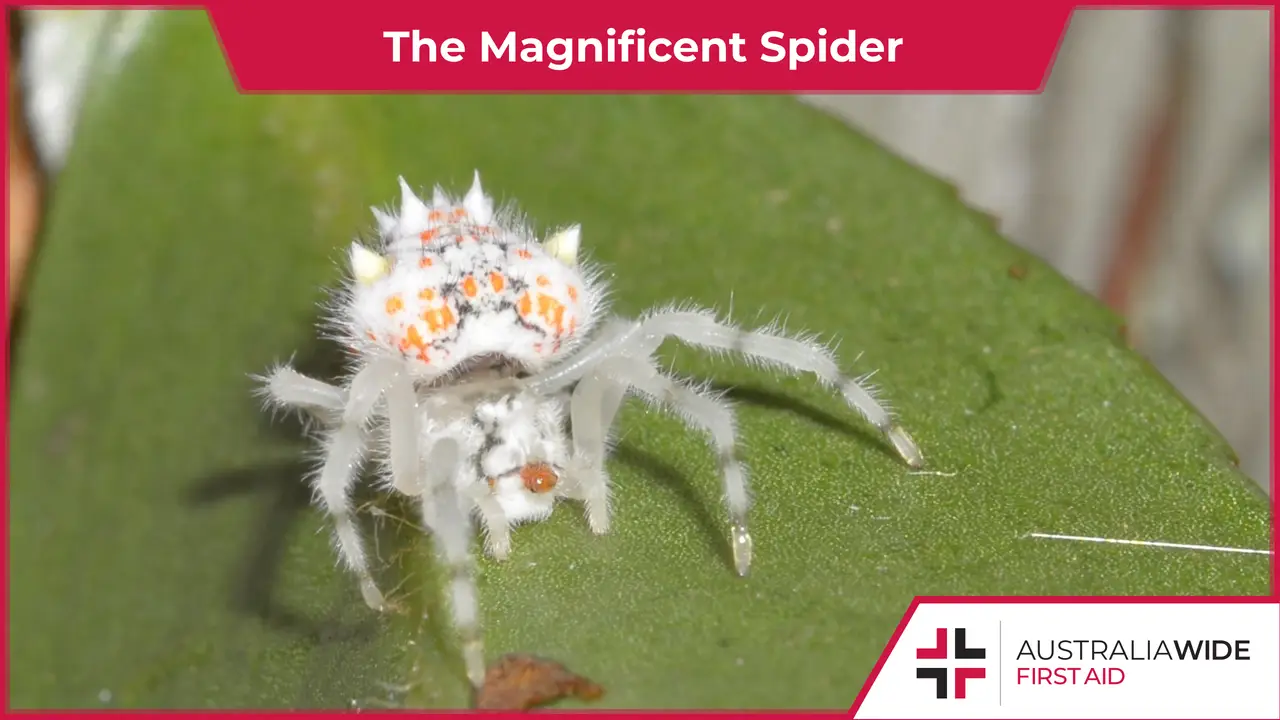Your Guide to the Magnificent Spider


Commonly encountered in Queensland and New South Wales, the female Magnificent spider (Ordgarius magnificus) is renowned for distinctive markings on its abdomen.
They also have an ingenious method for capturing moths.
In this article, we will look closely at this elusive arachnid, and where you are likely to encounter one.
We also cover spiders and spider bites in the following courses:
You can head to our website to enrol in a location near you.
The female Magnificent spider has the following identifying characteristics:
The Magnificent spider can be found along the Australian east coast, from Townsville in the north to Tasmania in the south, including:
Their preferred habitat includes dry or wet sclerophyll forests, where they hide between leaves that they bind together with silk.
Like other bolas spiders, the Magnificent spider uses deception to capture its preferred prey - moths.
At night, the Magnificent spider spins a short line of silk with a sticky globule, or bolas, at the free end.
This globule may emit an airborne pheromone that imitates the scent of female moths belonging to the Noctuidae family, thereby attracting male moths of the same genealogy.
The Magnificent spider has vibration sensitive hairs on its legs. As such, when it senses the approach of a moth in flight, it twirls the silken thread and swings the globule around until it hits the moth.
It then hauls the moth up and bites and immobilises it, either to eat it immediately or stow it away for safekeeping.
Female Magnificent spiders also use their spinnerets to construct brown, spindle shaped egg sacs that can be up to 5 cm long and house roughly 600 eggs.
The Magnificent spider is not considered dangerous to humans. However, if you are bitten by one, it is better to be safe than sorry and follow the first aid procedure for a Redback spider bite.
We can teach you how to identify and treat spider bites in the following first aid courses:
You can head to our website to enrol in a location near you.

March 11, 2025
Darwin, the tropical capital of Australia’s Northern Territory, is home to a rich diversity of wildlife - including an impressive array of spiders. From the sprawling webs of golden orb-weavers to the cryptic camouflage of trapdoor spiders, these arachnids play a vital role in the local ecosystem. While some may inspire fear, the majority are harmless and even beneficial, helping to control insect populations.

September 4, 2024
Cat bites, while often underestimated, can lead to serious health complications if not treated promptly and properly. Cats' mouths harbour a variety of bacteria that can cause infections in humans.

April 1, 2024
Encounters with wildlife can often be thrilling, but when it comes to the creature known as the drop bear, the experience can quickly turn dangerous. A sharp increase in recent attacks prompts the need for understanding proper first aid procedures in case of an attack.